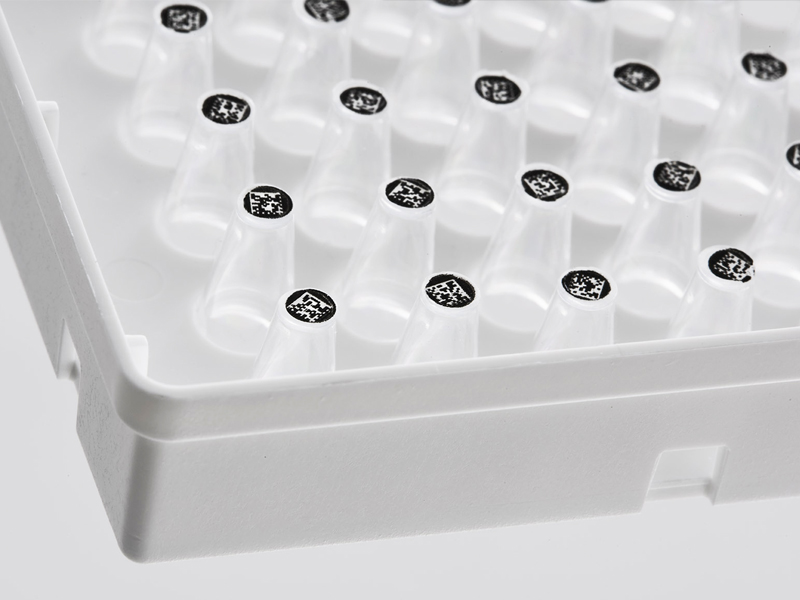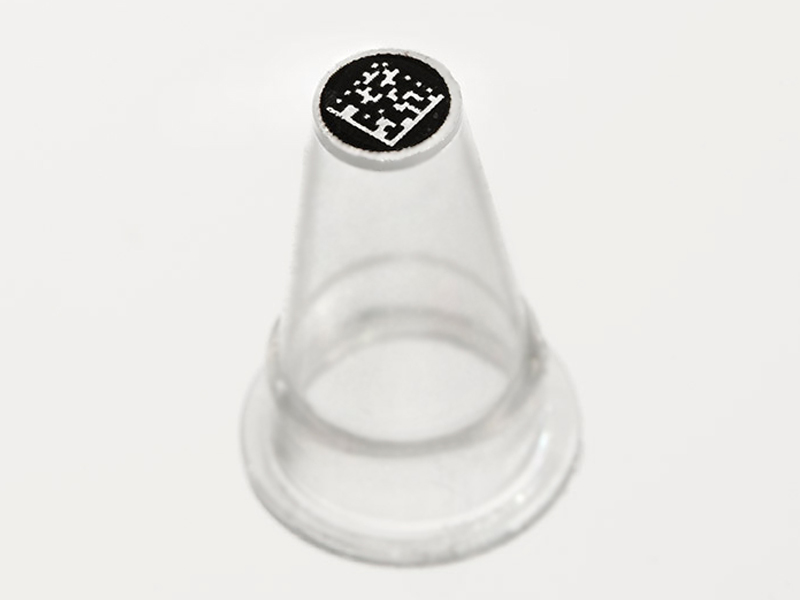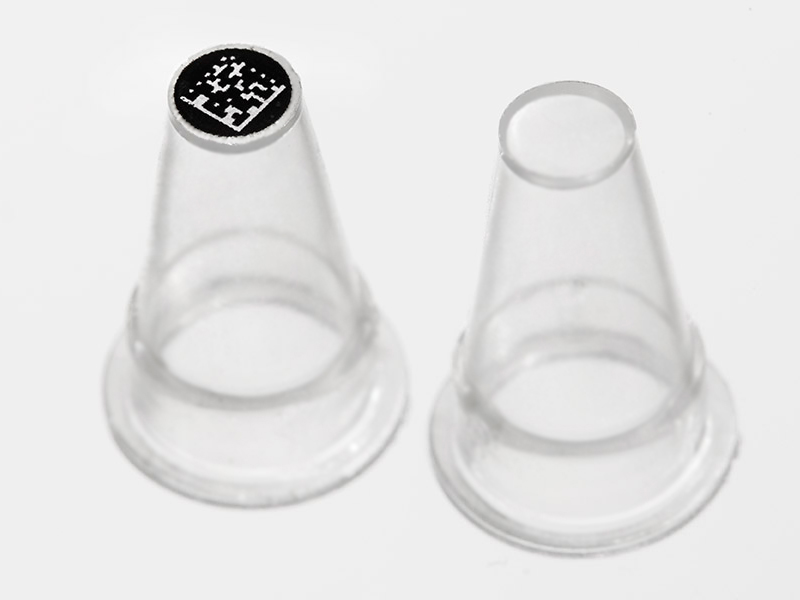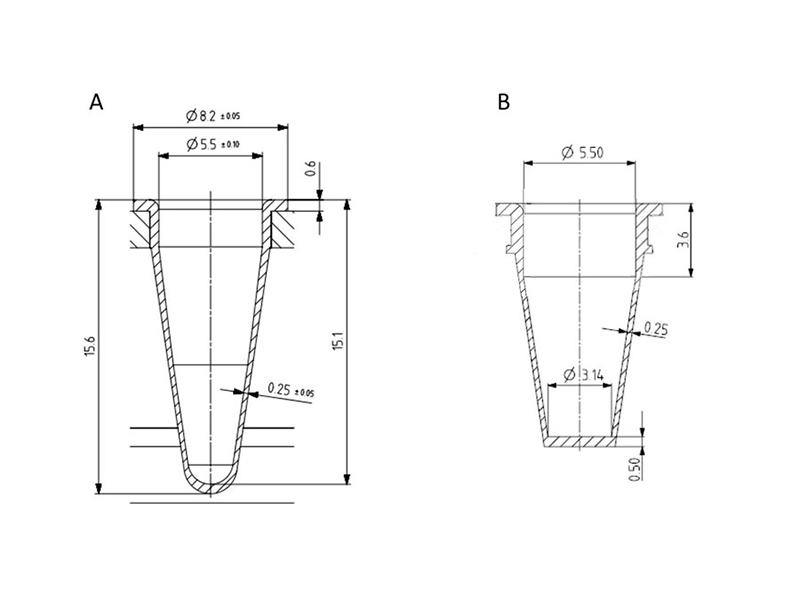96 well, fully skirted, low profile format with each tube inserted separately into the plate frame, allowing for selection and removal of individual tubes from the plate. Each tube clicks into place in the frame ensuring tubes are secure once inserted.
We have now extended our Individual Access range to include PCR plates with 2D coded flat bottoms for applications that require superior sample tracking. In applications where it is essential for samples to be tracked throughout their processing, e.g. for diagnostic assays on clinical samples, tube labeling is a far safer and reliable method compared to cap or seal labeling (which can be misplaced, damaged or rendered unreadable after piercing).
Our plates have a unique 2D code printed on the bottom of the well and a linear barcode on the side of the plate to allow for identification of both the plate and individual tubes within. The rigid polycarbonate skirt of this design eliminates warping and distortion during PCR. Together with the SBS footprint, this makes the plate suitable for use with robotic systems, ideal for both small and high throughput labs.
Empty frames are available for tubes to be transferred to. The frames can be re-used multiple times, depending on the application. Sample tubes can be identified by the unique 2D code on the base of the wells, removed from the Individual Access plate quickly and easily, and moved to another Individual Access frame for downstream processing or storage.
Quick selection of desired tubes reduces the time needed for the sample plate to be out of the freezer and therefore reduces the chance of other wells defrosting in the meantime. Flat bottom PCR plates can be stacked, allowing for optimal use of freezer space as multiple plates can be housed in the same space as a storage rack. The 2D codes on the bottom of the wells can be read by most 2D datamatrix readers including Azenta Life Sciences Whole Rack Scanners The codes are highly scratch resistant and can withstand cold storage (-80°C), temperatures up to 100°C and solvents such as DMSO. 2D datamatrix codes utilize data redundancy so even if codes are partly destroyed, the information will still be retained. Each code is tested for readability and guaranteed to be unique.

















